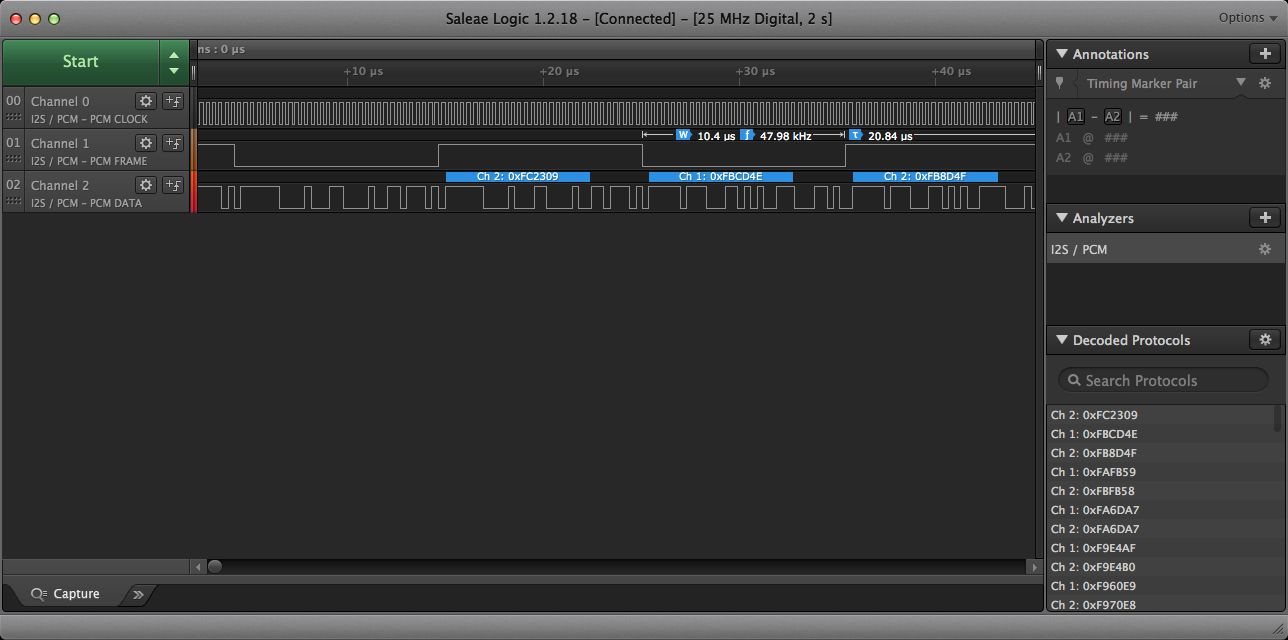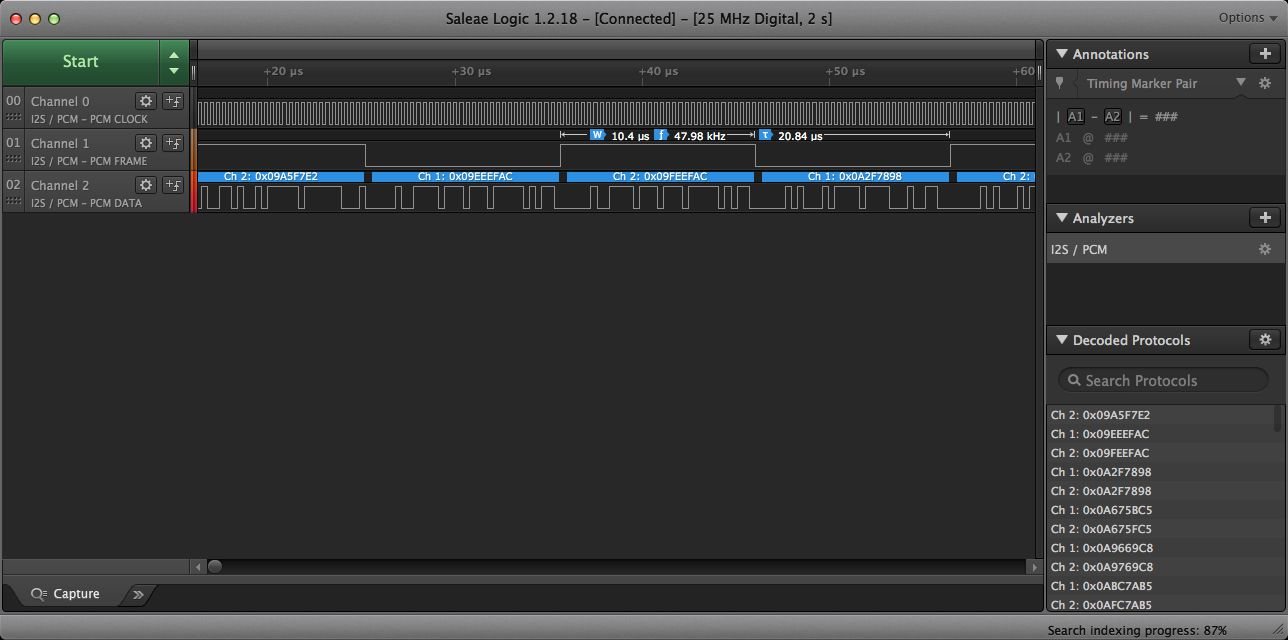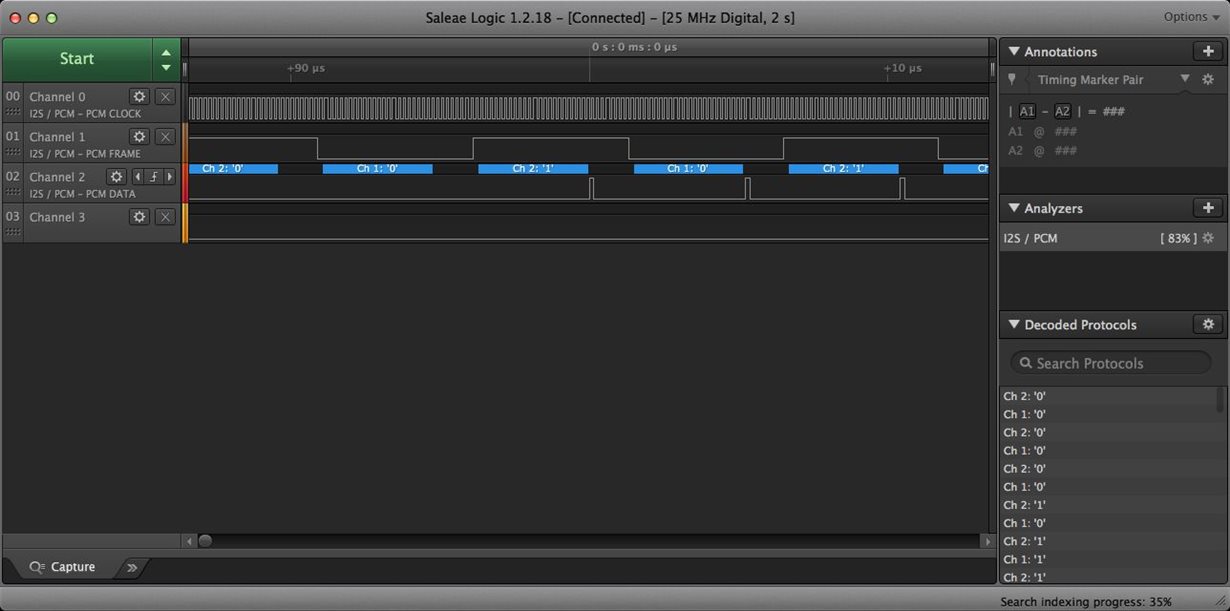Other Parts Discussed in Thread: PCM5142
Hi,
I have an almost-working prototype using an SRC4392 feeding a PCM5142, but I have one last problem: 16-bit data files won't play.
I'm feeding I2S audio into Port B set up as a slave, with the Port B data format set to 24-bit I2S.
Data from Port B goes through the SRC and is sent out Port A to the PCM 5142.
Port A is set up as a master and sends 24-bit I2S at 192kHz.
Port A and the SRC are driven by a 24.576MHz MCLK .
The PCM5142 receives 3-wire I2S (no SCK) so it is in slave mode.
Playing 24-bit and 32-bit files at 44.1kHz, 48kHz, 96kHz or 192kHz works fine. 16-bit files at 44.1kHz or 48kHz result in silence.
The RDY pin is pulled low for all files (inc. 16-bit) so it appears that Port B is receiving and the SRC is locking on to the clock for 16-bit files, but no output from Port A.
The 0x32 and 0x33 registers show the correct ratio for all of the files, including 16-bit.
Is this a supported use case? In other words, should the SRC4392 be able to output 24-bit 192kHz I2S data from 16-bit I2S input data? The I2S spec says that the received should complete or truncate incoming data to match its internal work length.
Thanks in advance,
Peter






